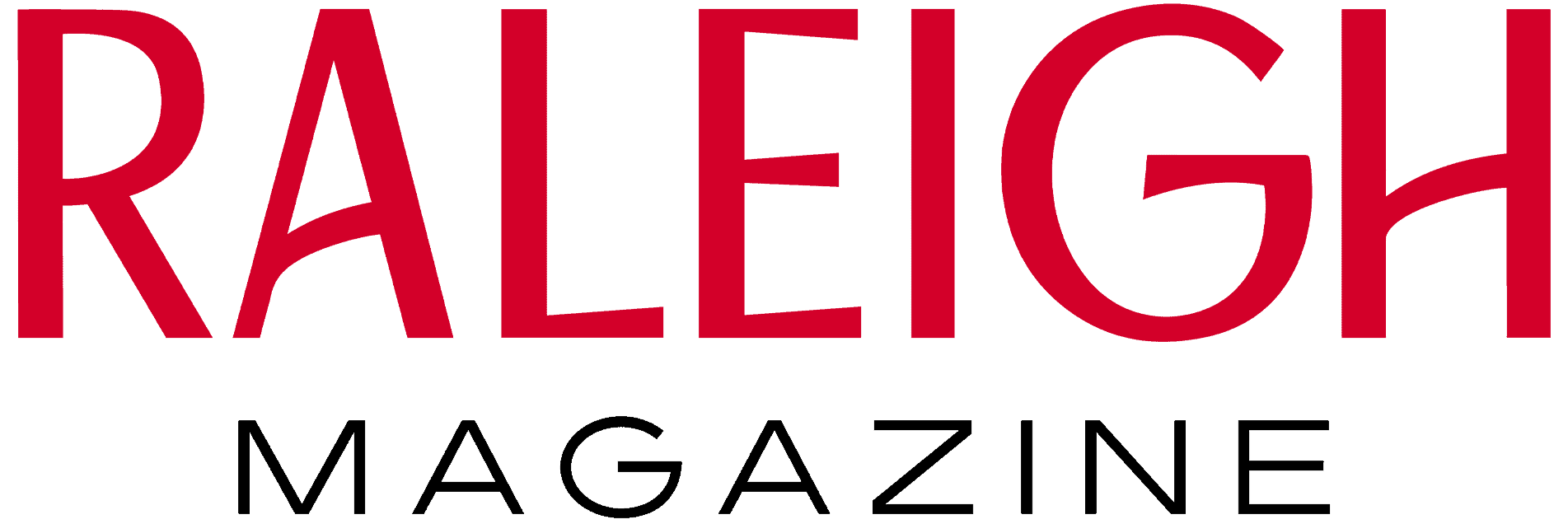Share this Post
We are fortunate to live in a city that offers diverse neighborhoods from country club homes to urban high rises. More and more you can find your lifestyle across the Triangle.
According to real estate forecasts, Raleigh will be one of the top 10 metropolitan markets in 2017 due to a steady economy and increasing population growth. And it’s not just about one zip code. Plenty of areas are hot—downtown Raleigh, Five Points, Cameron Village, North Hills and University Park, to name a few. The city offers an array of neighborhoods to meet different needs and interests.
“North Raleigh, Cary, and Apex homes under $300,000 are hard to find but snatched up often in multiple offers in just a few days,” says Cynthia P. Parker, a real estate agent with Fonville Morisey. “Many buyers will sacrifice size or condition to be closer to downtown or other urban areas for walkability and easy commutes. New communities that offer a “downsizing” lifestyle with masters [on the ground level] are also selling fast.”
The key is to identify the most important elements in your lifestyle and try and find a house that matches those needs. Do you dream of living near a lake? Or wake up with a nine-iron in your hand? Do you want to be in the midst of city nightlife? Or do you want privacy? We searched across the city to find neighborhoods that meet your different lifestyles.
Urban Life
Living downtown offers many benefits especially if you work there too. Cutting down on commutes can add hours to your day. Easy access to restaurants, bars and entertainment venues is a plus for those who are socially inclined, plus high-rise living, such as at The Residences at Quorum or The Gramercy, can offer amenities, such as swimming pools or fitness centers, and less maintenance.
“Downtown density offers reuse of infrastructure; shorter commute times, walkability to restaurants, stores and museums and a more sustainable lifestyle which relies on the city itself to be the amenity,” says Trish Healy of Hyde Street Holdings, who is debuting Manhattan-style brownstone living in her Hargett Place project. “Great cities have great urban neighborhoods.”
The hustle and bustle of city life attracts more than just Millennials. Healy says it’s also a draw for perennials, or people of all ages. The commonality? “People who are inquisitive, looking for the next big idea and always wanting to be near the action,” she says. This includes families who prefer an urban environment or retirees who are downsizing and want to take advantage of all the city’s cultural offerings without getting in the car.
“We also see more retirees and downsizers choosing this option as it gives them a ‘lock and go’ lifestyle to travel or enjoy vacation homes elsewhere” says Parker.
“This convenience comes at a price,” says Tracy Stull, a real estate agent with Raleigh United Real Estate. For example, the rowhomes at Hargett Place start at $700,000 for 1,700 to 2,300 square feet, according to Jackie Caprio of Fonville Morisey Barefoot, who handles sales the project. Residential condos at The Paramount range between $200,000 to $1.5 million for 600 to 2,500 square feet.
Part of her job, says Stull, is “making sure clients aren’t more in love with the idea than the reality.” Some other downsides to living downtown include smaller units, limited natural light, and lack of yards or outdoor living spaces. However, for urban lovers the proximity to great restaurants, theater, museums and more is worth sacrificing space and paying higher prices.
Hargett Place does offer private courtyards and rooftop patios, a rare feature downtown. “The rooftop outdoor space will become an additional living room or dining room—an extension of the home,” says Healy. “The views from the rooftop gardens pretty much drove the entire design.”

Country Club Living
Some people want more than a pool, they want resort living. And several country club communities across the city—Carolina Country Club, TPC at Wakefield Plantation, Northridge and Brier Creek—offer amenities such as tennis courts, champion-level golf courses, fitness centers, and more.
“Golf course communities are always going to be attractive as they can give the feeling of being on vacation every day,” says Stull. “These communities are mostly on the outskirts, so the fun comes at the cost of a more lengthy commute and hefty HOA fees.”
Hasentree in Wake Forest boasts a Tom Fazio designed golf course, 800-acres of rolling wooded landscape, a 13,000-square-foot Family Activity Club, tennis courts, fitness center, onsite Oak Restaurant, Oasis Spa and a pool complete with water slide. Hasentree is also one of only two Certified Gold Audubon International Signature Sanctuaries in North Carolina.
“Hasentree really has something for everyone, from the family on the go, to the retiree who just wants to relax,” says Kathleen Rollinson, Marketing Specialist at Toll Brothers. Smaller single-family homes start at $520,000 while the larger Signature Collection range in size from 4,060 to 6,000 plus square feet and start from the upper $600’s to over $1 million.
“These neighborhoods offer social events and tournaments and a sense of belonging,” says Parker. “If you back to the course you get the advantage of all that ‘green space’ with vistas and views.”
While the new Hasentree community is situated about a half hour from downtown Raleigh, Carolina Country Club has been a city institution since 1910. Most homes near the club are resales and listings come and go quickly. Plus, expect to pay upward of $1.5 million. For those in search of a country club atmosphere with more affordable options, check out the Brier Creek Country Club. The Cottages Collection at Brier Creek offers townhome-style and single-level homes with access to resort-style amenities starting from the low $300,000s.

Water Views
Those lucky enough to find a house on a lake or pond can enjoy an active outdoor lifestyle, such as canoeing, kayaking, or fishing. But the inventory can be limited with only a smattering of neighborhoods offering viable options—Lake Lynn, Springdale Estates, or Norwood Knolls, amongst them.
However, two new luxury communities—Falls Reserve and Waterstone Reserve—are offering large, private lots for those looking for a waterside retreat. “I live up on Falls Lake and I’m passionate about lake living,” says Dan Clem, Director of Marketing of the Jim Allen Group. “Almost every weekend neighbors get together to paddleboard and kayak. If the weather is pretty, people are on the water.”
Lake living offers more privacy, larger lots, and a bird’s eye view of wildlife. Plus, says Clem, your kids will never outgrow the lake. They go from wading in the water to water skiing. And, it’s precisely this environment that draws mostly families to the area or retirees who want to create a retreat for family visits.
“Often this serenity means a longer drive to amenities and shopping and you may experience more wildlife encounters,” says Parker. “Be prepared to spend more time at home enjoying the view!”
Waterstone Reserve is in Wake Forest and home sites have access to the Hasentree community amenities, including the golf course, fitness center, swimming pool and more. Falls Reserve, however, is conveniently located in North Raleigh with closer access to the city. Large and beautiful wooded lots are scarcer and scarcer in Raleigh, with Falls Reserve being one of the few new luxury options available. The communities offer true custom builds with a choice of 10 to 12 local builders to work with to design your dream home. Prices start at $600,000 and take between six to seven months to build.

Walkable Communities
Across the Triangle, you’ll find several pocket communities, essentially smaller urban centers where you can still walk to a café or restaurant without being in the middle of downtown.
“These neighborhoods are not ‘downtown’ but are situated within close proximity to a shopping mecca where shopping, dining, movies, and other entertainment are available along with public transportation options,” says Parker, of the neighborhoods that include Cameron Village, North Hills and Five Points.
For the last five years, North Hills and nearby neighborhoods, such as Quail Ridge, have been some of the hottest selling properties, especially for those who want to leave the car at home during weekends and walk. The midtown neighborhood offers everything from shops and movie theaters to restaurants and grocery stores. Most of the homes nearby are resales and prices have been rising steadily over the last few years. For those who are open to renting, North Hills also offers numerous high-rise options with luxury amenities and urban-style living away from downtown.
Historic neighborhoods such as Oakwood and Five Points offer walkability plus charm and character. “Historic neighborhoods can offer some of the same advantages as true downtown living does. It tends to be close to city centers, giving you the same proximity to jobs and entertainment, but with the advantage of more space and privacy,” says Stull. However, she adds, they can also be a double-edged sword: “Full of beauty and character, but with a higher than average maintenance burden.”
These pocket communities also appeal to a wide variety of individuals since they combine the advantages of urban life with those of more residential areas. And communities like Five Points offer a range of housing options from duplexes to larger historic homes addressing the needs of first time buyers to families.
“The presence of sidewalks on almost every street, offers greater walkability, connectivity, and community, as well as enhances the beauty of the neighborhood,” adds Van Fletcher of the Allen Tate Co. “It’s also very well-located inside Raleigh’s beltline – downtown, North Hills, Cameron Village are all within a five-minute drive.”

Into the Woods
For those desiring a quieter lifestyle with access to greenways and more square footage, North Raleigh offers plenty of beautiful wooded neighborhoods with large decks and fenced yards.
“In most cases the same money will buy 50 to 100 percent ‘more home’ than in downtown areas,” says Parker. “We have a large system of greenway spaces, trails and parks in the North Raleigh area that can offer buffers between neighborhoods but also easy access for nature or fitness walks, and biking.”
The varied options, including established neighborhoods like Wood Valley and Barton’s Creek Bluff, address different needs, from smaller footprints in the $300,000 range to larger homes with access to community pools. But they all have one thing in common: favoring more scenic, wooded areas over urban conveniences.
Newer communities such as Pinebrook Hills off of Glenwood Avenue offer customized options nestled in a wooded landscape of mature trees. “Buyers are able draw upon thousands of design ideas from our state-of-the-art studio to personalize their new home,” says Anna Wilson, Marketing Manger of Ashton Woods.
Another new option, Avalaire bills itself as country life in a beautiful park setting with 25 percent of the community dedicated to preservation of its natural resources. But it does come with a luxury price tag—$1 million and up for ¾ acres to just under three acres.
“You may need to work harder at getting to know your neighbors as they can often disappear behind those garage doors and commuting distances to major employment centers can sometimes be a bit tougher. You will drive everywhere,” warns Parker.
Share this Post






